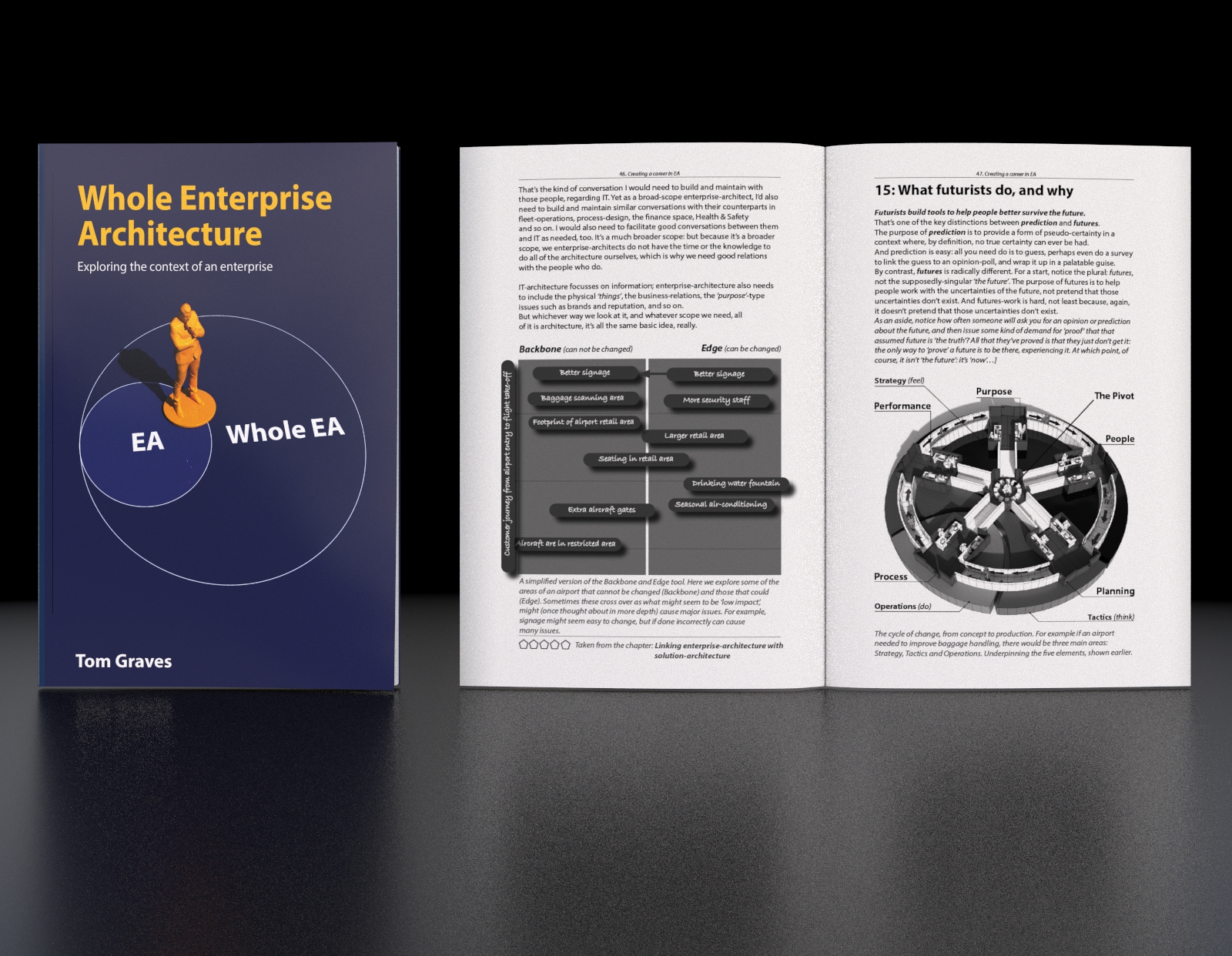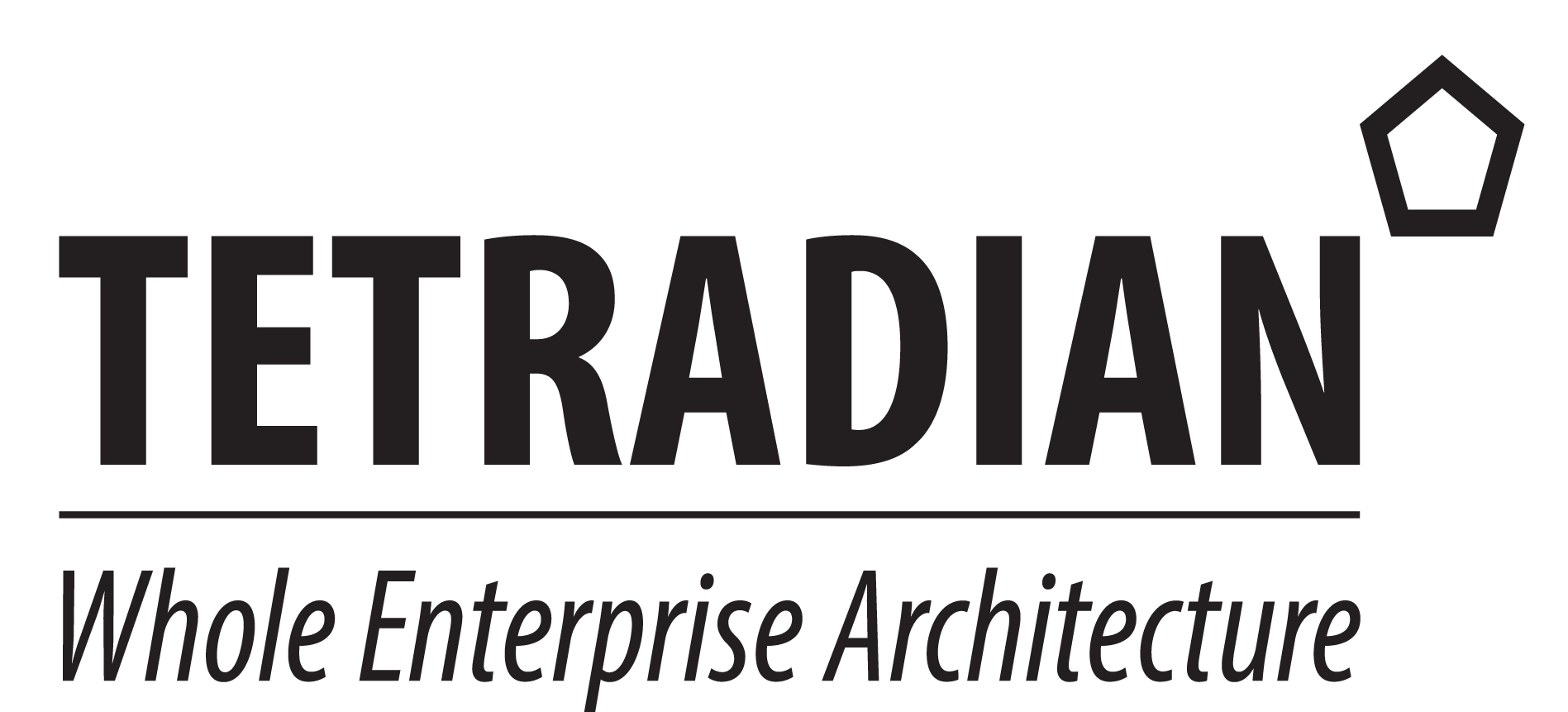Exploring the context of an enterprise
Enterprise Architecture and IT Architecture are often seen as one and
the same.
But do you fully understand the overall enterprise of which your
organisation is only a part? Whole Enterprise Architecture brings together Tom Graves’ thirty years of experience working in EA in multiple industries around the world, to help you spot and tackle the common pitfalls which plague organisations facing change.
Presented in a series of approachable articles with diagrams, this book
will help all organisations facing change to explore and resolve
it effectively.
Available now at all good book retailers.

Reviews for Whole enterprise Architecture
Whilst working in the USA I was able to enjoy a weekend in NYC. After exploring for a few hours I settled in central park and continued reading ‘Whole Enterprise Architecture’ by Tom Graves. I really consider it a must read for anyone aspiring to understand more about the practice of Enterprise Architecture.
Ezekiel Vozzo, Principal Enterprise Architect at Fragile To Agile, Australia
“Whole Enterprise Architecture is not only a fascinating book, but it naturally leads us to distinguish the complete universe of enterprise architecture from architecture limited to IT, in a didactic and practical way we enter the world of pure enterprise architecture, Without the noise that a framework could cause, we understand the work of the enterprise architect, its importance and the value it brings to a company. It clarifies the career path that a person who wants to work as an enterprise architect should follow.”
Maribel Mercado Rejón, Sr. Enterprise Architect, Citibanamex, Mexico,
“Whole Enterprise Architecture: Exploring the Context of an Enterprise” offers a holistic approach to understanding enterprise architecture (EA). The central thesis is that EA should be a comprehensive system that connects all facets of an enterprise, serving as the “glue” between strategy and execution. The author divided the book into several parts, each focusing on different aspects of EA, from career considerations to basic principles and the importance of a ‘whole’ perspective to practical tools like the A-B checklist and the Five Elements. With more than four decades of experience, the author distinguishes between internal and external enterprise architects, emphasizing the need for both in a balanced EA practice. He introduces innovative concepts like dealing with “anti-clients” and avoiding pitfalls like “policy-based evidence.” Practical tools are presented not as substitutes for thinking but as aids to navigate complexity. The book also serves as a bridge to more extensive resources, making it a good starting point for those new to the field.”
David Solis, SVP of Enterprise Architecture: Service and Product Processors, Citibanamex, Mexico
I would argue that Tom Grave’s in this book not only reflects on the practice of Enterprise Architecture, but also underscores the importance of reflectivity in the practice of EA.
It also is a quick paced introduction to the domain of EA, taking the reader from the practices and basics of EA over to the core concept, namely ”the whole EA”. This concept is central to Grave’s writing and has many interesting aspects. Grave’s promotes a humanistic view of EA, putting people first and emphasises a relational and broad understanding of the scope of EA. There are many insights and quotes throughout the book, like: ”The real product of EA is not the diagrams, but the social process by which we arrived at those diagrams, which is not the same thing at all”.
Gerolf Nauwerck, Business Architect, Uppsala University, Sweden
